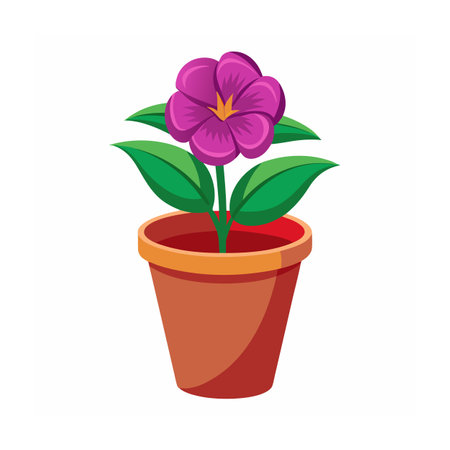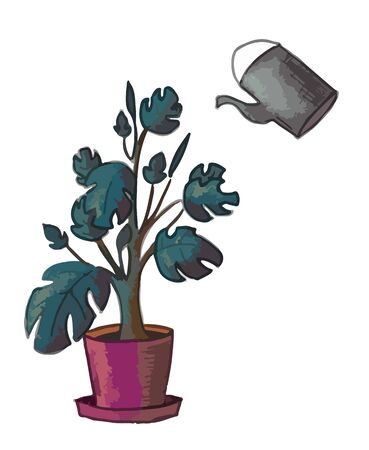1. Introduction to Xeriscaping
Xeriscaping is a landscaping approach that focuses on water efficiency. Originally developed in arid regions like the American Southwest, its now gaining popularity all across the United States—from California to Colorado and even parts of the Midwest and Southeast. As water conservation becomes more important due to climate change and rising utility costs, many homeowners are turning to xeriscaping as a smart, eco-friendly alternative to traditional lawns.
One of the key benefits of xeriscaping is its ability to dramatically reduce water usage. Traditional grass lawns can require thousands of gallons of water each year, especially during hot summers. By replacing thirsty turf with drought-tolerant plants, homeowners can cut down on their water bills while still enjoying a beautiful and functional yard.
Why Xeriscaping Works Across Different U.S. Climate Zones
Xeriscaping isnt just for deserts. With the right plant selections, it works well in many different climates—whether youre dealing with dry summers in Oregon, periodic droughts in Texas, or sandy soils in Florida. The key is choosing plants that are native or well-adapted to your local environment. These plants typically need less water, fewer chemicals, and minimal maintenance once established.
Main Benefits of Xeriscaping
| Benefit | Description |
|---|---|
| Water Conservation | Reduces outdoor water use by up to 60%, depending on location and design |
| Lower Maintenance | No mowing, less weeding, and minimal pruning required |
| Saves Money | Lowers monthly water bills and reduces the need for fertilizers or pesticides |
| Sustainable Landscaping | Puts less strain on local water supplies and supports local ecosystems |
| Curb Appeal | A well-designed xeriscape can boost property value with unique textures and colors |
If youre considering making the switch or simply want to add more sustainable elements to your yard, xeriscaping is a great place to start. In this series, we’ll introduce you to ten of the best drought-tolerant plants suited for xeriscaping in various parts of the U.S.—so stay tuned!
2. Key Features of Drought-Tolerant Plants
When planning a xeriscape garden, understanding what makes certain plants thrive in dry conditions is essential. Drought-tolerant plants have special adaptations that help them survive with minimal water. These features not only make them ideal for arid climates but also reduce maintenance and water bills.
Common Adaptations of Drought-Tolerant Plants
Here are some key traits that help drought-tolerant plants conserve water and withstand heat:
| Adaptation | Description |
|---|---|
| Deep Root Systems | These roots grow far into the soil to access underground moisture, allowing the plant to survive long dry spells. |
| Waxy or Hairy Leaves | A waxy coating or tiny hairs on leaves reduces water loss by limiting evaporation from the leaf surface. |
| Small or Narrow Leaves | Smaller leaf surfaces lose less water, making it easier for the plant to retain moisture in hot weather. |
| Succulent Tissues | Some plants store water in their thick, fleshy leaves or stems, allowing them to use this reserve during droughts. |
| Slow Growth Rates | Drought-tolerant plants often grow slowly, which helps them conserve energy and resources. |
Why These Features Matter in Xeriscaping
Xeriscaping focuses on creating landscapes that require little to no irrigation. By choosing plants with the above traits, homeowners can build beautiful yards that are both eco-friendly and cost-effective. Whether you live in the desert Southwest or experience seasonal droughts elsewhere in the U.S., these plant features help maintain a vibrant landscape year-round.
Bonus Tip:
Always group plants with similar watering needs together. This makes your irrigation more efficient and keeps all your plants healthy without over- or under-watering.
Next Up:
Well dive into the top 10 drought-tolerant plants perfect for xeriscaping across various U.S. regions.

3. Top Considerations for Choosing Xeriscape Plants
When planning a xeriscape garden, choosing the right drought-tolerant plants is key to success. But not all drought-resistant plants are suitable for every location. To create a beautiful and sustainable yard, it’s important to consider several factors before selecting your plants. Heres what you need to know:
Regional Climate
The U.S. has a wide range of climate zones—from arid deserts in the Southwest to humid coastal areas in the Southeast. Make sure the plants you choose are well-suited to your local climate conditions. Native and regional plants often perform best because they’re already adapted to local weather patterns and rainfall levels.
Example:
| Region | Recommended Plants |
|---|---|
| Southwest (e.g., Arizona, New Mexico) | Agave, Desert Marigold, Red Yucca |
| Southeast (e.g., Florida, Georgia) | Muhly Grass, Blanket Flower, Coreopsis |
| Northern Plains (e.g., Nebraska, North Dakota) | Purple Coneflower, Russian Sage, Yarrow |
| West Coast (e.g., California) | California Poppy, Lavender, Toyon |
Soil Type
The type of soil in your yard—sandy, clay, loamy—affects how water drains and how nutrients are absorbed. Some drought-tolerant plants prefer well-drained sandy soils, while others can handle heavier clay soils better. It’s worth doing a simple soil test or talking with a local nursery to understand your soil type.
Sun Exposure
Drought-tolerant plants vary in their sunlight needs. Some thrive in full sun (6+ hours per day), while others prefer partial shade. Match your plant choices with the amount of sunlight each area of your yard receives throughout the day.
Quick Sunlight Guide:
| Sunlight Level | Description | Suggested Plants |
|---|---|---|
| Full Sun | 6 or more hours of direct sun per day | Sedum, Lavender, Agave |
| Partial Shade | Around 4–6 hours of sun per day | Coneflower, Salvia, Coral Bells |
| Full Shade | Less than 4 hours of direct sun per day | Lambs Ear, Ferns (less common for xeriscaping) |
Maintenance Requirements
Xeriscaping is all about low-maintenance landscaping—but even among drought-tolerant plants, care levels can vary. Consider how much pruning, deadheading, or pest control youre willing to do. If you want a truly hands-off garden, look for hardy perennials that require minimal upkeep.
Tips:
- Select native plants for easier maintenance and better survival rates.
- Avoid invasive species that could take over your yard.
- Add mulch around plants to retain moisture and reduce weeds.
Selecting the right drought-tolerant plants based on these key considerations will help ensure your xeriscape garden looks great year-round while saving water and reducing upkeep.
4. Top 10 Drought-Tolerant Plants for U.S. Gardens
If youre looking to create a water-efficient landscape, choosing the right plants is key. Xeriscaping doesnt mean sacrificing beauty — many drought-tolerant plants offer vibrant colors, interesting textures, and year-round appeal. Heres a curated list of ten resilient plants that thrive in various climates across the U.S., including native grasses, hardy shrubs, succulents, and flowering perennials.
Top 10 Drought-Tolerant Plants
| Plant Name | Type | Best Growing Zones | Key Features |
|---|---|---|---|
| Lavender (Lavandula spp.) | Flowering Perennial | Zones 5–9 | Fragrant blooms, attracts pollinators, low maintenance |
| Blue Fescue (Festuca glauca) | Ornamental Grass | Zones 4–8 | Compact size, blue-gray foliage, great for borders |
| Agave (Agave spp.) | Succulent | Zones 8–11 | Dramatic structure, very low water needs |
| Russian Sage (Perovskia atriplicifolia) | Flowering Shrub | Zones 4–9 | Purple flowers, aromatic foliage, long blooming season |
| Sedum (Stonecrop) | Succulent Groundcover/Perennial | Zones 3–9 | Colorful blooms, thrives in rocky soil, great for borders or roofs |
| Purple Coneflower (Echinacea purpurea) | Flowering Perennial | Zones 3–9 | Daisy-like flowers, wildlife-friendly, heat tolerant |
| Karl Foerster Feather Reed Grass (Calamagrostis x acutiflora) | Ornamental Grass | Zones 5–9 | Tall vertical form, drought and cold resistant |
| Cactus (Various species) | Succulent/Cactus | Zones 7–11 (varies by species) | Diverse shapes and sizes, excellent for desert landscapes |
| Yarrow (Achillea millefolium) | Flowering Perennial | Zones 3–9 | Tough plant with flat flower clusters, attracts butterflies |
| Sagebrush (Artemisia tridentata) | Shrub (Native to Western U.S.) | Zones 4–9 | Aromatic silvery foliage, native and highly drought-adapted |
Caring Tips for Drought-Tolerant Plants
- Select native species: Native plants are already adapted to your local climate and soil conditions.
- Avoid overwatering: Even drought-resistant plants can suffer from too much water.
- Add mulch: Mulching helps retain moisture and reduces weed growth.
- Group similar plants: Place plants with similar water needs together to make irrigation more efficient.
This diverse mix of drought-tolerant plants offers something for every style of xeriscape garden — from modern desert vibes to classic cottage looks. Whether youre landscaping in Arizona or Colorado, or just want to cut back on watering in California or Texas, these plants provide beauty without draining resources.
5. Tips for Designing and Maintaining a Xeriscape Garden
Creating a successful xeriscape garden goes beyond just choosing drought-tolerant plants. It involves smart planning, efficient water use, proper mulching, and ongoing care. Here are some easy-to-follow tips to help you get started and keep your landscape looking great year-round.
Smart Layout Planning
Before planting, take time to design your garden layout based on sunlight, soil conditions, and plant groupings. Use the concept of hydrozoning—grouping plants with similar water needs together—to make irrigation more efficient.
| Plant Zone | Water Needs | Examples |
|---|---|---|
| Oasis Zone (Near House) | Moderate | Lavender, Rosemary |
| Transition Zone (Mid-Garden) | Low | Sage, Coneflower |
| Arid Zone (Outer Edges) | Very Low | Agave, Yucca |
Irrigation Best Practices
Xeriscaping doesnt mean no watering—it means watering wisely. Drip irrigation is ideal because it delivers moisture directly to the roots with minimal waste. Water early in the morning or late evening to reduce evaporation.
Watering Tips:
- Use timers to automate watering schedules.
- Check for leaks or clogged emitters regularly.
- Avoid overhead sprinklers—they waste water through evaporation.
The Power of Mulching
A good layer of mulch helps retain soil moisture, suppress weeds, and regulate soil temperature. Organic mulches like bark or wood chips work well and eventually add nutrients to the soil as they decompose.
Recommended Mulch Types:
- Bark Mulch: Great for flower beds and around shrubs.
- Gravel or Rock: Ideal for arid zones; reduces weed growth.
- Pine Needles: Good for acid-loving plants like lavender.
Long-Term Care Made Simple
Xeriscape gardens are low-maintenance but not no-maintenance. Regular tasks like pruning, checking irrigation systems, removing weeds, and replacing mulch when needed will keep your landscape healthy and attractive.
Seasonal Maintenance Checklist:
- Spring: Refresh mulch, inspect irrigation lines, prune dead growth.
- Summer: Monitor moisture levels; adjust watering during heatwaves.
- Fall: Cut back perennials; prepare plants for winter dormancy.
- Winter: Minimal care needed; protect sensitive plants from frost if necessary.
A well-designed xeriscape using drought-tolerant plants can thrive with just a bit of thoughtful planning and routine care. With these best practices in place, your garden can be both beautiful and sustainable year after year.

